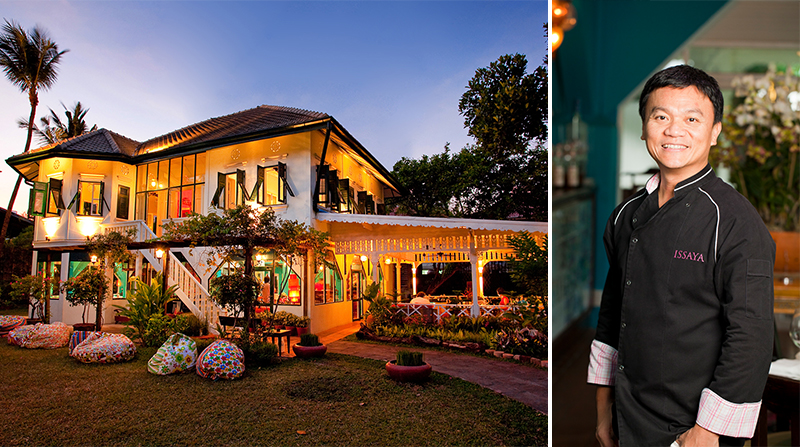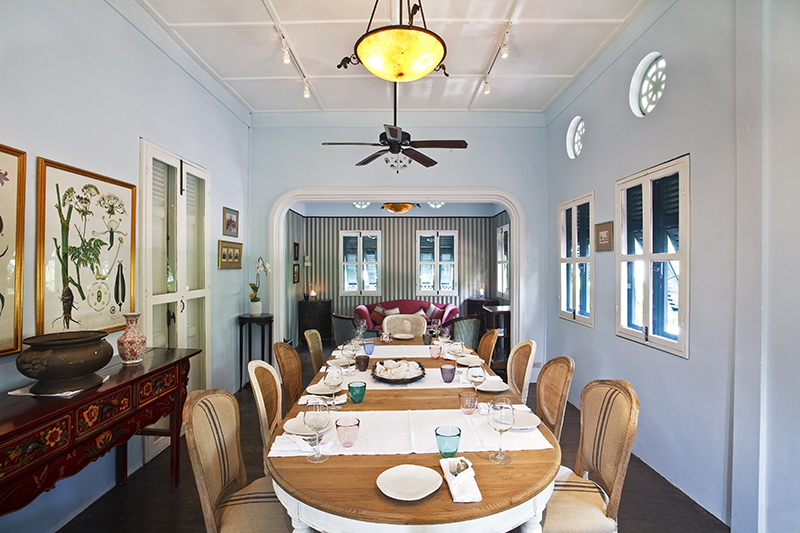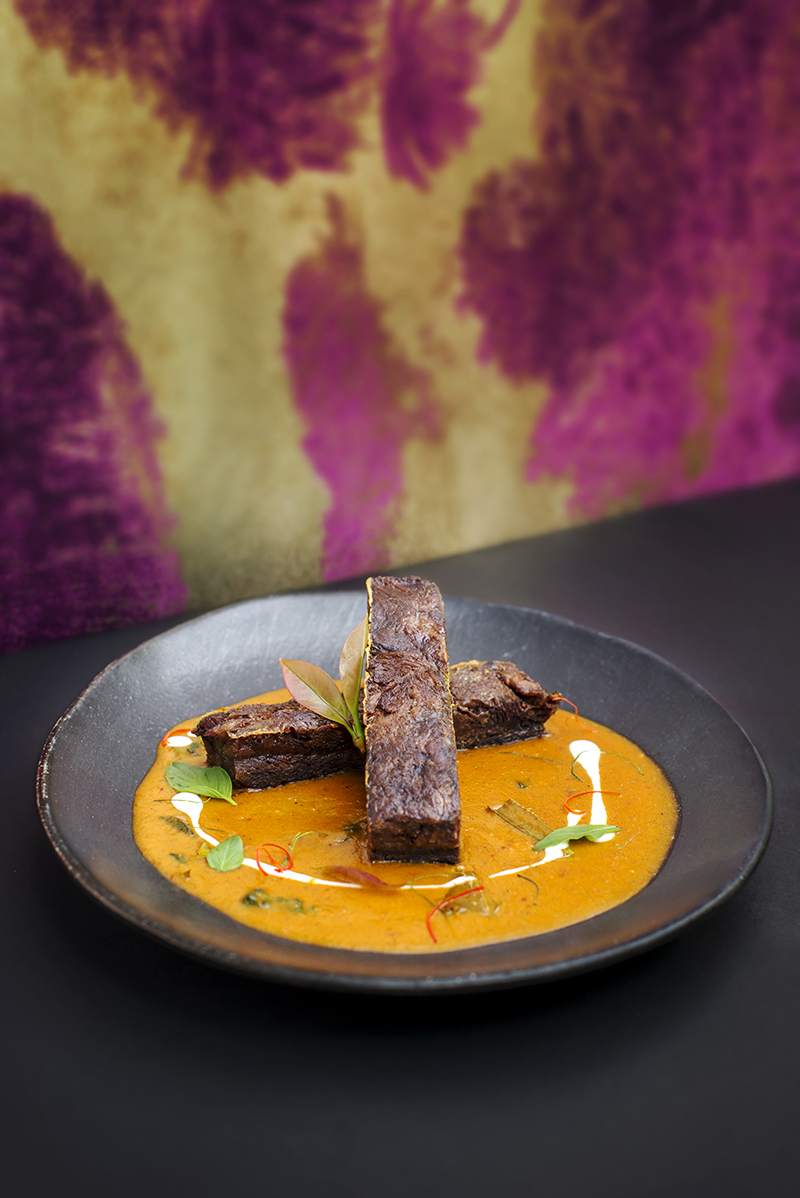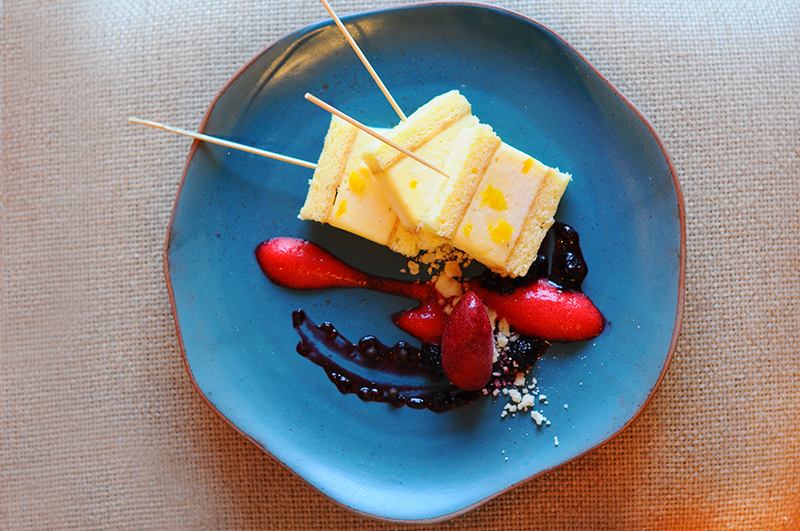

Issaya Siamese Club and Chef Ian Kittichai. Credit: Ian Kittichai
Internationally renowned for his modern take on traditional Thai cuisine, chef Ian Kittichai’s global empire had humble origins. A restaurateur who would go on to open beloved eateries all around the globe, Kittichai started his culinary career as a child helping his mother sell curries from a cart on the streets of Bangkok.
“My mother was a self-taught cook,” says Kittichai, who, at 13 years old, was already driving a truck to the local market at 3 a.m. While his mom returned home to prepare the day’s dishes, Kittichai went to school. After finishing his classes, he’d help his mother sell her flavorful fare, calling out, “Hot curry coming, hot curry coming!”
His mom introduced him to vendors she trusted and taught him how to pick the best vegetables and where to buy fresh bean curd. Even today, Kittichai says, his dishes draw on classic preparations that he learned working with his mother, as well as her desire to use the freshest ingredients.

Dining with Chef Kittichai. Credit: Ian Kittichai
The Makings of a Master
“I never wanted to be a chef,” Kittichai says. “I could see how hard my mom worked!” In fact, as a young man, the future chef made his way to London thinking he’d study business. He ended up getting a job washing pots in a local restaurant to help pay his expenses.
After a few weeks, he began serving tea and coffee during breakfast, although he didn’t yet speak enough English to do much else. Eventually, after Kittichai started to help in the kitchen, the restaurant’s chef offered to send him to school if he wanted to pursue a culinary career.
“I didn’t go to a great school. I didn’t go anywhere like [the Culinary Institute of America],” says Kittichai, adding that his courses at the time cost just 55 pounds ($75) a year. “But if you’re passionate about what you do, you can learn anywhere.”
By age 18, Kittichai says, “I told myself that this is going to be your job, your future, so get on with it.”

Gaeng Kua Nua. Credit: Ian Kittichai
Building an Empire
Today, Kittichai is known around the world for enlivening traditional Thai cuisine with modern style — a popular concept as evidenced by the success of his international restaurant empire, from his flagship Issaya Siamese Club in the Thai capital to his other establishments in Mumbai, Barcelona and New York.
When it came to his first concept, Kittichai looked to his roots. Bangkok’s Issaya is set in a classic Thai home that’s more than 100 years old. The menu, he says, draws from the traditions of Royal Thai cuisine, where Kittichai begins with classic recipes but updates the products and the presentation.
“I don’t want to say it’s a ‘modern style,’ but my philosophy is to use organic ingredients and bring out their flavor,” he says. Kittichai does this by employing techniques like tableside cooking. For example, his staff prepares green curry at your table in a hot stone bowl, and his grilled pork shoulder with roasted rice is also wok-cooked before your eyes.
Still, the contemporary element often comes into play during the plating process. “Even if a recipe is 400 years old,” he says, “[the finished dish] doesn’t look like it did 400 years ago.”

Saree Cake. Credit Ian Kittichai
Staying True to Thai Roots
Even with his modern spins, Kittichai’s cuisine maintains the integrity of his childhood home.
“I’m a really bad ambassador for Thai food outside of Thailand, because I want people to eat traditional, authentic dishes,” the chef says, explaining that Thai cuisine shouldn’t be made with Western ingredients, like carrots, broccoli or zucchini.
At Issaya Siamese Club, he prepares his curries with meat, eggplant and herbs. Even at his New York restaurant, where customers might not be as familiar with vegetables like Thai eggplant, he insists, “I still have to put it in.”
Wherever he’s cooking, Kittichai says that certain ingredients are essential to Thai cuisine: “Lemongrass is always in my refrigerator. It’s so flavorful and aromatic.” He describes kaffir lime leaves as another “secret weapon,” with a unique flavor that “opens your palate.”
“Thai people are critics” when it comes to food, Kittichai adds. They demand quality ingredients and precise preparations. Before opening Issaya Siamese Club in Bangkok, “I thought, ‘No way would I open a Thai restaurant in Thailand!’ But my wife [and business partner Sarah Chang], who is American, convinced me that my style was different enough to succeed in my home country. It was the best advice.”
